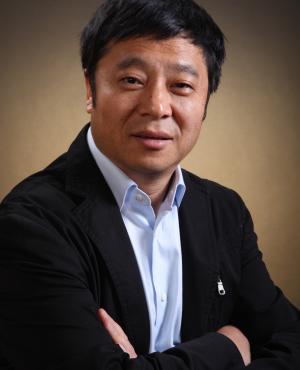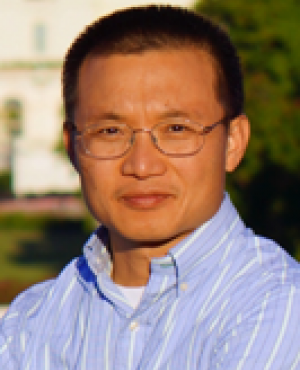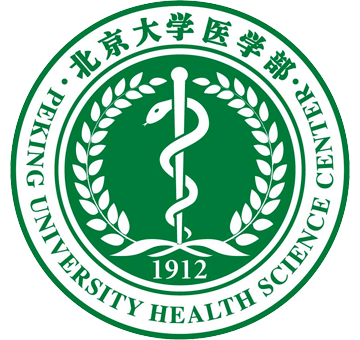
Hongkui Deng, MD
JI Program: Cardiovascular
Status: Completed
Summary
Cardiovascular disease (CVD) is the leading cause of death in the world today, and the death rate has remained virtually unchanged in the last twenty years. The severity and prevalence of this disease underscores a critical need for developing novel therapeutic strategies for effective treatment. Cell-based therapy represents an extremely promising approach to treat heart diseases but requires strict safety and efficacy tests before clinical trials. In principle, somatic cells obtained from a heart patient can be reprogrammed to generate his/her own human induced pluripotent stem cells (hiPSCs). These iPSCs can then be differentiated into heart cells or tissues for transplantation. While this strategy should avoid any undesired immune response from patients, two major issues exist: the potential oncogenic property of the hiPSCs due to the use of viral vectors and the oncogenic transgenes, and the uncertainty of appropriate differentiated cell types for successful heart transplantation therapies. The study’s objectives are: 1) to optimize a chemical approach as a much safer strategy to generate patient specific iPSCs, and 2) to efficiently differentiate the chemically induced iPSCs into cardiac progenitor cells as an ideal cell source for heart regeneration. The PKUHSC and Michigan Medicine team offers unparalleled expertise and resources for the success of the pioneer work proposed here – addressing these two critical issues in heart disease therapy. The team hopes to achieve the long-term goal of developing stem cell-based heart therapies to effectively prolong and improve the life of patients with CVD.
Outcomes
- Mastered the technique for chemical induced mouse iPSCs and characterized the mouse iPSCs into cardiac lineages.
- Derived embryonic stem cell lines or induced pluripotent stem cell lines that are able to contribute both embryonic and extra-embryonic lineages.
- Transplanted ESC/iPSC derived cardiac progenitor cells and cardiomyocytes into infarcted animal hearts.
- Exploring the regulatory pathway with the FDA to repurpose a currently approved drug to treat acute heart attack.
Publications
- Liu Q, Tian S, Zhao C, Wang Z*, Ma PX* (2015) Porous nanofibrous poly(l-lactic acid) scaffolds supporting cardiovascular progenitor cells for cardiac tissue engineering. Acta Biomaterialia. 2015;26:105-114.
- Tian S, Liu Q, Gnatovskiy L, …Wang Z (2015) Heart regeneration with embryonic cardiac progenitor cells and cardiac tissue engineering. J Stem Cell and Transplantation Biology. 2015; 1(1):104
- Liu L, Lei I, Wang Z (2016) Improving cardiac reprogramming for heart regeneration. Curr Opin Organ Transplant 2016; 21(6): 588-594.
- Liu L, Lei I, … Shaomeng Wang, Wang Z (2016) Targeting Mll1 H3K4 methyltransferase activity to guide cardiac lineage specific reprogramming of fibroblasts. Cell Discovery 2016;2:16036.
- Li Y, Tian S, Lei I, … Wang Z (2017) Transplantation of multipotent Isl1+ cardiac progenitor cells preserves infarcted heart function in mice. Am J Transl Res.2017;9(3): 1530-1542
- Yang Y, Liu B, Xu J, Wang J, Wu J, Shi C, Xu Y, Dong J, Wang C, Lai W, Zhu J, Xiong L, Zhu D, Li X, Yang W, Yamauchi T, Sugawara A, Li Z, Sun F, Li X, Li C, He A, Du Y, Wang T, Zhao C, Li H, ChiX, Zhang H, Liu Y, Li C, Duo S, Yin M, Shen H, Belmonte JC, Deng H (2017) Derivation of Pluripotent Stem Cells with In Vivo Embryonic and Extraembryonic Potency. Cell 169: 243-257
- Wang L, Meier E, Tian S, Lei I, Liu L, Xian S, Lam MT, & Wang Z : Transplantation of Isl1+ cardiac progenitor cells in small intestinal submucosa improves infarcted heart function Stem Cell Res Ther 8: 230, 2017. PMC5644064.
- Shuo Tian; Ienglam Lei; Wenbin Gao; Liu Liu, Yijing Guo; Shaoxiang Xian; Peter X. Ma; Y. Eugene Chen; Yongqing Li; Hasan B. Alam; and Zhong Wang*. HDAC inhibitor valproic acid protects heart function through Foxm1 pathway after acute myocardial infarction. EBioMedicine 39 (2019) 83-94.



